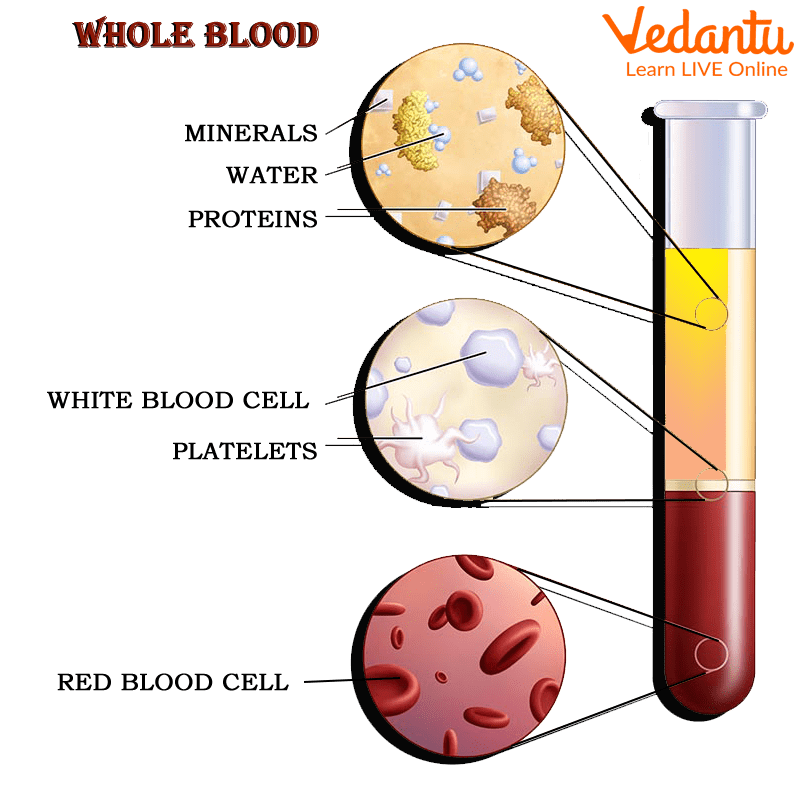




Blood and Its Components
Are you familiar with blood? Many of you will, but how exactly can we describe it? In simple words, it's that red substance that seeps out when you get a paper cut. But exactly what does it do? Let’s go through the document to have a better understanding of blood and its importance.
Blood is a fluid that flows throughout the body within blood vessels. Blood is essential for life, because it carries oxygen and nutrients to organs and tissues, and helps eliminate waste. In addition, blood helps fight infections and heal from injuries. Red blood cells, white blood cells, platelets, and plasma are some of the parts of blood that make up blood.
From which Substances is Blood Made of?
The four components of blood are:
Red Blood Cells (RBS’s)
White Blood Cells (WBS’s)
Platelets or Thrombocytes
Plasma
Now let’s discuss them one by one.
Red Blood Cells
They are the most numerous cells in the blood.
They are responsible for transporting oxygen from the lungs to the rest of the tissues.
The protein inside that binds oxygen is called haemoglobin.
Haemoglobin is red and gives this color to blood.
White Blood Cells
They are also called leukocytes.
They deal with defending the body against the attack of bacteria, viruses, parasites and fungi.
Platelets
To stop bleeding, platelets work with clotting proteins.
Per microliter of blood, there should be between 150,000 and 400,000 platelets.
Plasma
It is the liquid part of the blood.
This liquid transports the different types of blood cells to all parts of the body.
Plasma carries proteins called "clotting factors" that help platelets to form clots.
The composition of blood is shown in the figure below:

Composition of Blood
Blood Functions
By explaining its components, we have already advanced some of its basic functions. Among them stand out:
Transport oxygen to the tissues and transport carbon dioxide from the cells to the lungs to be eliminated abroad.
Transport the energetic substances that the organism needs.
Defend the body against agents that are harmful to health, preventing the onset of infections or diseases and/or mitigating their effects.
Perform tissue healing and coagulation processes.
The color of the blood is undoubtedly its most characteristic quality. Red and blood are two strongly associated concepts to the point that the color red is strongly linked to the representation of violence, war, health, or other concepts linked to the liquid that circulates through our veins and arteries.
Summary
The components of blood are made up of two parts, one is liquid and the other is cellular. The liquid is the plasma. And the cellular part has three types of cells. These are red blood cells, white blood cells, and platelets. The main function of red blood cells, or erythrocytes, is to transport oxygen from the lungs to the body's tissues and carbon dioxide as a waste product from the tissues to the lungs. Hemoglobin (Hgb) is an important protein in red blood cells that carries oxygen from the lungs throughout the body.
FAQs on Blood and Its Four Components
1. Why does blood appear blue when we see it through the skin?
If you look at the back of your arm, you can surely make out some of the veins and arteries that your blood runs through. When observing them, you will realize that they give the impression of being blue. This is due to an optical illusion. Blue light does not penetrate as deeply into tissues as red light. If the veins are deep enough, we will see them in blue due to the partial absorption of the red waves. Thus, the red color that is so characteristic of our blood is an essential part of the mechanism that allows us to live.
2. Why does blood have that characteristic red color?
The cause of why blood is red in colour is a vital protein in the blood called haemoglobin. Haemoglobin contains a red-colored compound that is essential for transporting oxygen in the blood from the lungs to the rest of the body.
3. Which part of the blood is most susceptible to contamination?
The most common infectious risk from transfusion has been identified as bacterial contamination of platelet products, which affects roughly 1 in every 2,000 to 3,000 whole-blood generated, random donor platelets and apheresis derived, individual donor platelets.









